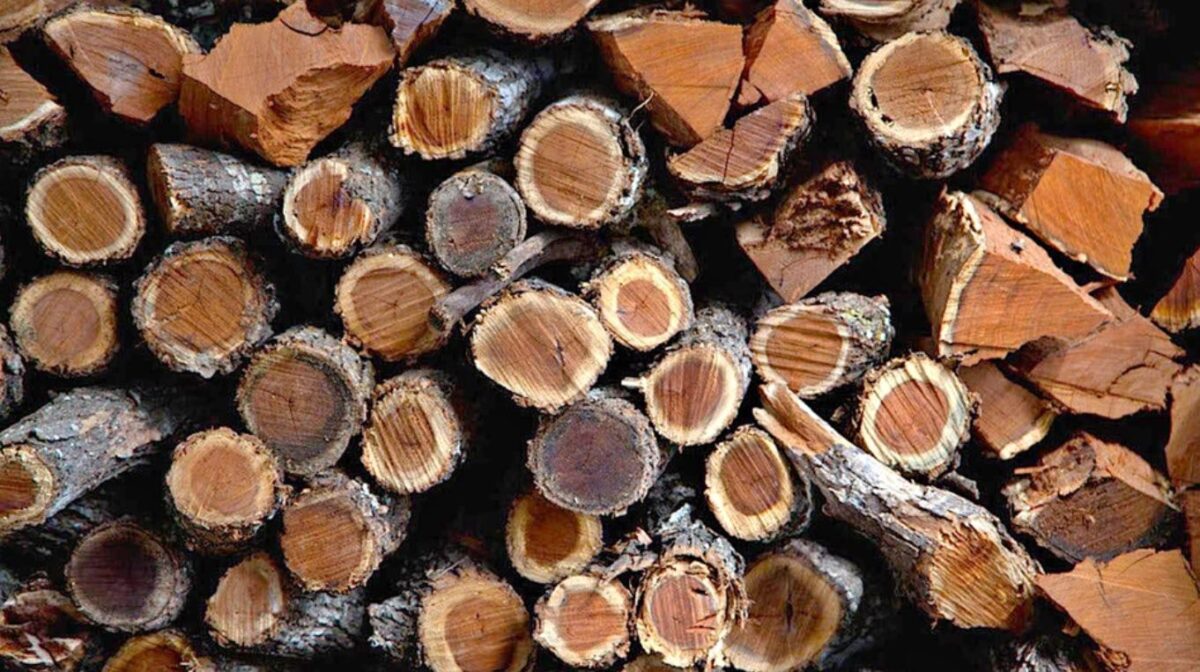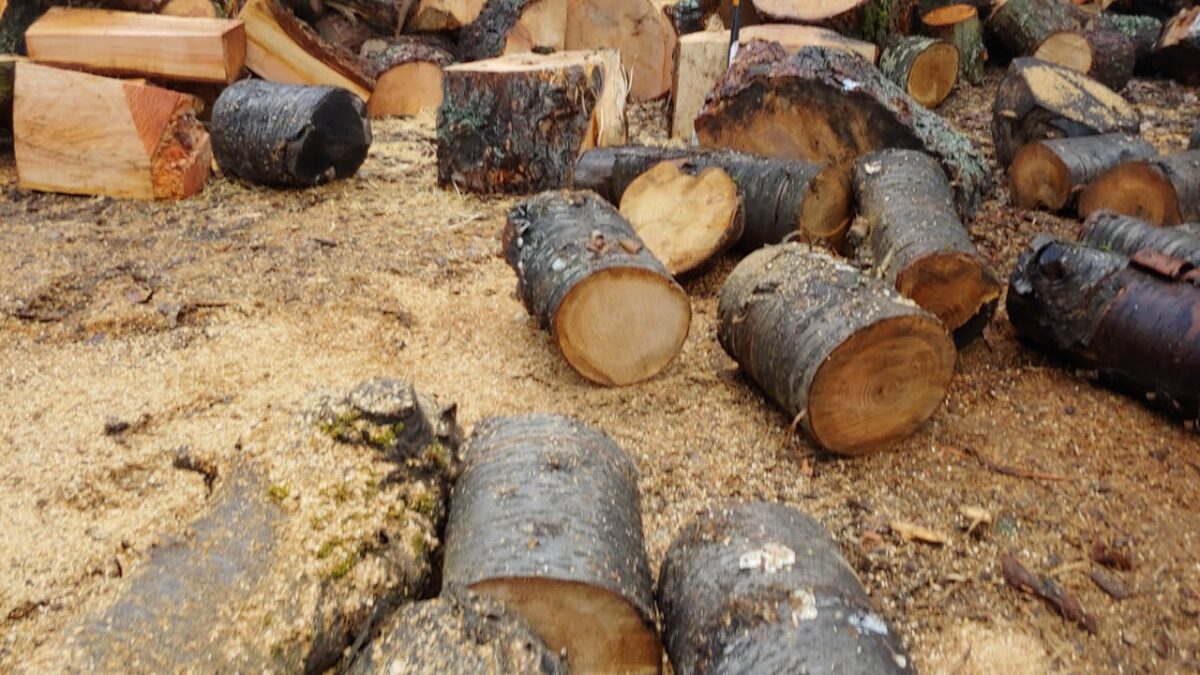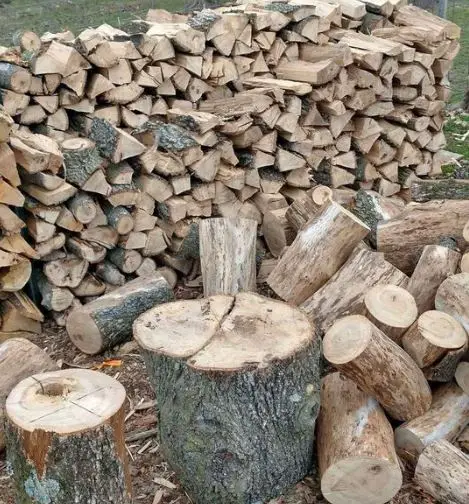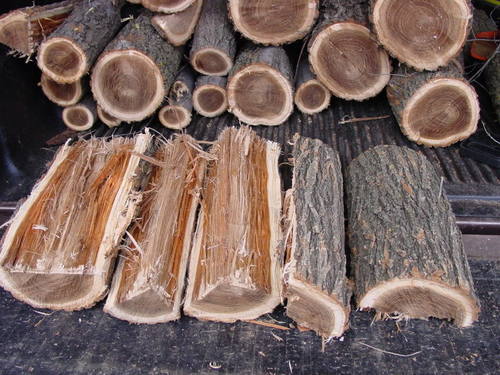To infuse the right flavor into your meat during a smoke-out, choosing the right wood is essential. This wood smoking chart guide gives you an extensive list of different types of woods and their unique flavors. It also suggests the best meat pairing for each wood type and optimal smoking temperatures.
| Wood Type | Effectiveness for Smoking | Unique Smell | Suitable Meats |
|---|---|---|---|
| Mesquite | High, known for its intense, earthy flavor | Strong, similar to a campfire | Beef, game meats |
| Cherry | Moderate, offers a mild, sweet smoke flavor | Pleasant, fruity aroma | Poultry, pork (can also be mixed with harder woods like hickory or oak) |
| Pecan | High, provides a rich, sweet, and nutty smoke flavor | Less intense than hickory, but more robust than fruit woods | Poultry, pork, fish (for a smoother smoke, it can be mixed with lighter woods like apple or cherry) |
| Hickory | High, known for its strong, hearty, bacon-like flavor | Savory, robust aroma | Red meats, pork shoulders, ribs, briskets |
| Maple | Moderate, lends a delicate, sweet, and somewhat smoky flavor | Mild aroma | Poultry, game birds (can be blended with stronger woods like hickory for a harmonized flavor profile) |
| Oak | High, popular for its heavy smoke flavor | Full-bodied, smoky aroma | Beef, lamb |
| Apple | Moderate, gives a mild, sweet, and fruity flavor | Light, sweet aroma | Poultry, pork, fish |
| Alder | Moderate, known for its subtle, slightly sweet flavor | Mild, with a hint of sweetness | Fish, especially salmon, and poultry |
| Peach | Moderate, delivers a mild, sweet, and fruity flavor | Pleasant, sweet aroma | Poultry, fish, pork |
| Plum | Moderate, known for its sweet, mild flavor | Light, sweet aroma | Chicken, turkey, pork |
Table of Contents
Best Wood Types for Smoking
When it comes to smoking meat, not all woods are created equal. The wood you choose can significantly influence the final flavor of your smoked delicacies. That’s why I’ve put together this smoking wood chart, to help guide you on this flavor journey.
Mesquite
Mesquite is one of the best woods for smoking, particularly known for its intense, earthy flavor. Its smell is strong and distinct, often likened to a campfire. Mesquite burns hot and fast, making it ideal for shorter smoking times. It pairs incredibly well with robust meats such as beef and game.

Cherry
Cherry wood brings a mild, sweet smoke flavor that subtly enhances your meat without overpowering it. Its pleasant, fruity aroma is fantastic for smoking poultry and pork. It can also be mixed with harder woods like hickory or oak for a balanced, nuanced flavor.

Pecan
Pecan wood, a type of hardwood, offers a rich, sweet, and nutty smoke flavor. Its aroma is less intense than hickory but offers a more robust flavor than fruit woods. Pecan is fantastic for smoking poultry, pork, and fish. Try mixing it with lighter woods like apple or cherry for an even smoother smoke.

Hickory
Hickory is the quintessential wood smoking choice for many pitmasters. Known for its strong, hearty, bacon-like flavor, hickory is especially suitable for smoking red meats. It brings a savory aroma to pork shoulders, ribs, or briskets.

Maple
Maple wood lends your meat a delicate, sweet, and somewhat smoky flavor. Its mild aroma makes it an excellent choice for smoking poultry and game birds. Its mildness also makes it ideal to blend with stronger woods like hickory for a harmonized flavor profile.

What Temperature to Burn Firewood for Smoking
Achieving and maintaining the right temperature is a central part of smoking meat that can make or break your BBQ experience. The secret to optimal smoking lies in the ‘low and slow’ approach, allowing the meat to cook gradually while soaking up all the flavors from the wood smoke.
While each type of meat may require a slightly different temperature, you should generally aim to maintain a smoking temperature between 200°F and 275°F. This range is considered ideal for most meats. Here’s a more detailed guide:
- Poultry: Whether it’s chicken, turkey, or duck, a smoking temperature of 275°F works best.
- Pork: Ribs, pork shoulders, and other cuts do well between 225°F and 250°F.
- Beef: Depending on the cut, beef smoking temperatures can range from 225°F for briskets and ribs to 275°F for steaks.
- Fish: A delicate protein like fish smokes best at lower temperatures, typically around 200°F.
Maintaining a consistent temperature is essential to prevent the meat from drying out or cooking too fast. A reliable meat thermometer will help you monitor the temperature and ensure your meat is smoking perfectly.
What Size Firewood For Smoking
Selecting the correct size of firewood for smoking can significantly impact the efficiency of your BBQ and the quality of your smoked meat. Using the right size wood ensures optimal heat and smoke production, and prevents over-smoking.
Wood chunks or logs are your best bet when smoking with a large smoker. They burn slower and provide consistent smoke over a long period, perfect for that low and slow approach.
For smaller grills or barbecues, wood chips are more appropriate. They ignite quicker and provide a good amount of smoke without creating too much heat, making them ideal for shorter, high-heat grilling.
It’s also worth noting that some people enjoy using a mix of chips and chunks. The chips provide an initial burst of smoke, while the chunks offer a slow, steady supply of smoke throughout the cooking process.
Remember, the goal is to achieve a thin, blue smoke rather than billowing white smoke. The former imparts a delicate, smoky flavor, while the latter can lead to an overly smoky, bitter taste. Experiment and see what wood size and type work best for your smoking needs!
Firewood Tips for Smoking
Whether you’re a seasoned pitmaster or a smoking newbie, these firewood tips can help make your smoking session a sizzling success. Here’s a deeper look at each tip:
Choose the Right Wood
Choosing the right wood can make a significant difference in the flavor of your smoked meat. Each type of wood imparts a unique flavor profile to the meat, so matching your chosen wood with the right meat is essential. Use the expanded smoking wood chart above to make the best wood selection for the meat you’re smoking.
Season Your Wood
Seasoning your wood is a vital step often overlooked by beginners. Freshly cut, or ‘green,’ wood contains a high moisture content which can produce too much smoke and potentially spoil the flavor of your meat. On the other hand, seasoned wood has been allowed to dry out, often over six months or more. This drying process reduces the moisture content and helps the wood to burn more evenly and cleanly, resulting in a cleaner smoke flavor in your meat.
Avoid Resinous Woods
Resinous woods, such as pine, spruce, and cedar, contain high amounts of sap and resin. While these woods are great for campfires, they’re less ideal for smoking meat. When burned, these woods can produce a thick, sooty smoke that can leave your meat with a harsh, bitter taste. Stick with the types of wood listed in our smoking chart for the best results.
Control Your Temperature
Maintaining a consistent temperature throughout the smoking process is crucial for producing tender, flavorful meat. Adding wood gradually instead of all at once can help maintain a steady temperature. Also, remember to preheat your smoker before adding your meat. A quality thermometer is invaluable in helping you monitor and maintain the right temperature.
Experiment
Smoking meat isn’t a one-size-fits-all operation. Feel free to mix different types of woods to create unique flavor profiles. Combining woods like hickory and apple can bring a lovely balance of strong and sweet flavors to your meat. Experimenting is part of the fun and can lead to some delicious discoveries.
Conclusion
Smoking meat is an art, and selecting the right wood is a significant part of that process. Whether it’s the intense flavor of mesquite, the hearty notes of hickory, or the delicate sweetness of maple, each wood type brings a unique character to your dishes. Remember, there’s no one-size-fits-all in wood smoking; experimentation is key.
